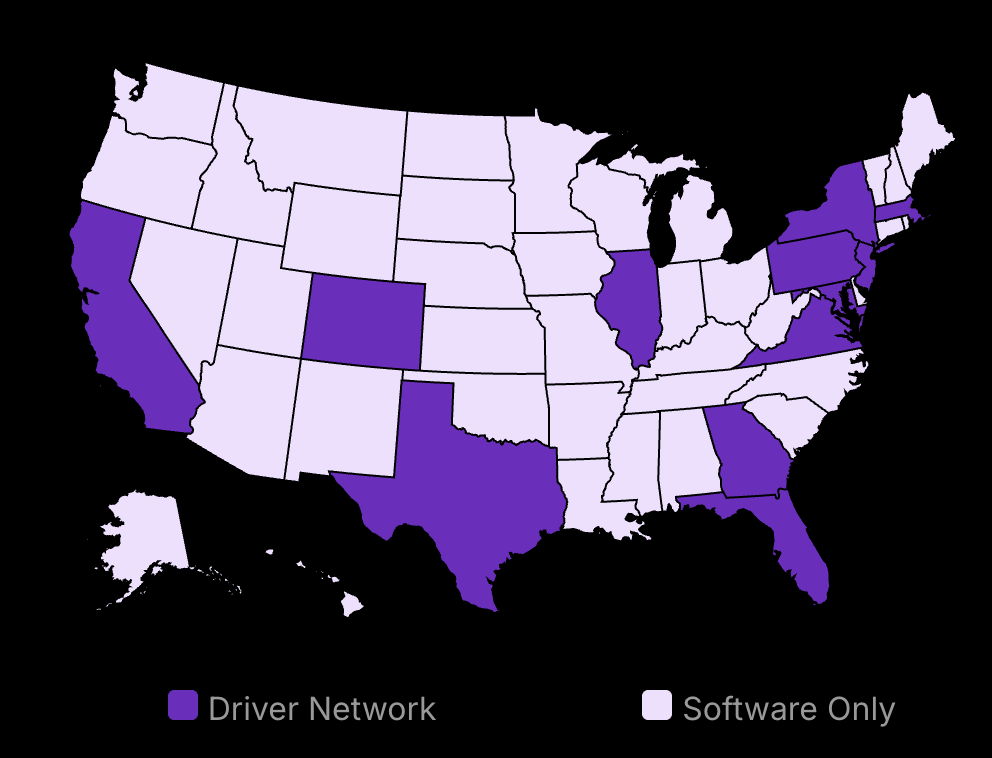Small business owners: credit card scam isn’t just a problem for big companies. In 2024, small businesses lost an average of $12,000 to credit card scams—money most can’t afford to lose from their financial accounts. Even worse? Many owners don’t discover these losses until weeks later, making it difficult to mitigate damage to their credit report.
The criminals targeting your business aren’t amateurs. They’re professionals who specifically hunt for small businesses because they know you likely have fewer security measures than large corporations, making you more vulnerable to credit card skimmers. They’re counting on you being too busy or overwhelmed to notice their tactics, which can lead to identity theft.
But here’s what they don’t want you to know: Protecting your business from credit card information data breaches doesn’t require expensive security systems or technical expertise.
What’s your current protection strategy? Most small business owners I talk to admit they don’t have one beyond basic payment processing, leaving them vulnerable to phishing credit card scams. That’s exactly what credit card scammers are counting on.
The difference between businesses that survive these attacks and those that don’t comes down to implementing a few straightforward prevention methods. These ten strategies will help you identify warning signs, strengthen your payment systems, and protect your hard-earned revenue, which may also involve communicating with your credit card issuer.

Metrobi drivers are rated 4.97 out of 5
Trusted by local businesses for:
- Background-checked professionals
- Specialized in business deliveries
- Same drivers for consistency
- 4.97/5 average delivery rating
Preventing Fraudulent Transactions and Credit Card Skimmers
Set up strong verification systems to stop unauthorized card use
Monitor transactions to detect unusual activity quickly
Create clear response plans for when fraud is suspected
Step 1: Implement Multi-Factor Authentication
Multi-factor authentication (MFA) adds an extra layer of security by requiring customers to verify their identity through multiple methods before completing a transaction. This simple step can dramatically reduce fraud rates for your small business and protect your credit accounts.
For credit card transactions, set up a system that goes beyond just requiring the card details. When a customer makes a purchase, have your payment system automatically send a verification code to their registered mobile phone or email address. The transaction only completes when they enter this code. Many payment processors now offer this feature as standard, and it’s often as simple as checking a box in your account settings.
For in-person transactions, consider requiring photo ID verification for purchases above a certain amount. Train your staff to check that the signature on the card matches the one on the ID, and that the photo resembles the person making the purchase.
Step 2: Use Advanced Payment Gateways
Not all payment processors offer the same level of security. It is better to choose payment gateways that specifically include fraud detection technologies and have good reputations for security, which can also protect your data from credit reporting bureaus .
Look for payment processors that offer:
Address Verification Service (AVS) to check if the billing address matches the one on file with the card issuer
Card Verification Value (CVV) requirements that verify the customer has physical possession of the card
Fraud scoring algorithms that evaluate the risk level of each transaction
PCI DSS compliance to ensure they meet industry security standards
Leading payment providers update their security features regularly to combat new fraud techniques. When selecting a provider, ask about their fraud detection capabilities and what kind of protection they offer merchants in case of chargebacks due to fraud, ensuring you can verify against your credit card statement.
Setting Up Your Payment Gateway
Once you’ve selected a secure payment gateway, follow these steps to maximize security:
Enable all available security features during the setup process
Set transaction limits that trigger additional verification
Configure IP filtering to block transactions from high-risk countries if they’re not relevant to your business
Schedule regular security updates and tests of your payment system
Step 3: Monitoring Transaction Patterns With Your Credit Card Information
Consistent monitoring is crucial for detecting fraudulent activity before it causes significant damage. Set up systems to alert you to unusual activity that might indicate fraud, and consider incorporating credit monitoring for additional protection.
You can start by establishing what “normal” transaction patterns look like for your business. This includes:
Typical purchase amounts
Common times of day for transactions
Usual geographic locations of customers
Regular purchase frequencies
Once you understand your normal patterns, set up alerts for deviations such as:
Multiple failed payment attempts from the same customer
Sudden large purchases, especially of high-value items
Several small transactions in quick succession (often used by fraudsters to test stolen cards)
Unusual shipping addresses that don’t match billing addresses
Orders from countries where you don’t typically do business
Implementing a Daily Credit Monitoring Routine
Create a daily routine for transaction review:
Schedule 15-30 minutes each day to review transaction logs
Look for patterns rather than individual transactions
Cross-reference suspicious transactions with customer history
Document unusual activity, even if it turns out to be legitimate
Create a simple spreadsheet to track fraud indicators over time
Step 4: Develop Clear Response Procedures For Credit Card Fraud
When you detect suspicious activity, having a clear plan in place helps you respond quickly and effectively, potentially preventing further losses.
Create a written fraud response procedure that includes:
Immediate steps to take when fraud is suspected
Who to contact within your organization
When to contact the payment processor or bank
How to communicate with affected customers
Documentation requirements for insurance claims
Train all relevant staff on these procedures and conduct practice runs to ensure everyone knows their role during a potential fraud incident.
What to Do If Fraud Occurs
If your business becomes a victim of a credit card scam, you should prepare a fraud report.
Contact your payment processor immediately to report the suspicious transaction
Place a temporary hold on the order if it hasn’t been fulfilled
Document all relevant details, including transaction IDs, timestamps, and communication
Report the incident to the card issuer
File a police report for significant fraud cases
Review your security measures to identify and fix any vulnerabilities
Step 5: Secure Physical Card Detail Readers
For businesses that accept in-person payments, physical card reader security is just as important as online payment security.
Take these steps to secure your point-of-sale systems:
Inspect card readers daily for tampering or skimming devices
Secure terminals to counters where possible
Position terminals where staff can see them at all times
Use tamper-evident seals on card readers
Train staff to recognize signs of card reader tampering
For mobile card readers, implement additional security measures:
Store devices securely when not in use
Assign specific devices to specific employees for accountability
Use inventory control procedures for all payment devices
Regularly update device firmware and applications
Step 6: Address Customer Concerns After Fraud Attempts
If a customer asks, “What if I gave my credit card info to a scammer?”, advise them to contact local police.
Prepare guidance that explains:
The need to contact their card issuer immediately to report unauthorized charges
How to monitor their accounts for further suspicious activity
Their rights regarding fraud protection under consumer protection laws
The typical timeline for resolving fraudulent charges
Documentation they should keep throughout the process
When customers know you have their best interests in mind, they’re more likely to continue doing business with you even after a security concern.
Creating Customer Resources
Develop these resources for customers who may experience credit card scams, especially those who may have new accounts or might be new to online purchases.
A simple one-page guide explaining what to do if they suspect fraud
FAQ section on your website addressing common fraud concerns
Clear contact information for your business’s fraud response team
Links to official resources from credit card companies and consumer protection agencies
Securing Payment Processes with Credit Report
Lock down your payment systems with proper staff training, secure networks, and regular software updates
Implement PCI DSS standards to protect customer card data and build trust
Use data encryption and secure authentication to prevent unauthorized access
Step 1: Educate Employees on Payment Security
Payment security starts with your team. Employees who handle payment information need to understand security protocols and recognize potential threats. Training should be thorough and ongoing to keep pace with evolving scam tactics.
You can start by developing a training program that covers basic payment security principles. This should include proper handling of credit card information, recognizing phishing attempts, and following security protocols during transactions. Schedule monthly or quarterly sessions to keep this information fresh. Training should be mandatory for all employees who handle payments, from cashiers in retail stores to accounting staff.
A key component of effective training is making it relevant to your employees’ daily tasks. It is best to use real-world examples of credit card scams that have affected similar businesses. When employees understand how these scams work and the potential impact on the business, they’re more likely to follow security protocols carefully.
Creating Effective Training Materials
Develop clear, easy-to-follow guidelines that employees can reference when processing payments. These guidelines should include:
Step-by-step procedures for secure card processing
Visual aids showing how to check for card tampering
Checklists for verifying customer identity during large transactions
Scripts for handling suspicious transactions
Implementing Regular Security Drills
Practice makes perfect when it comes to security protocols. Run regular security drills where employees can practice responding to potential fraud scenarios:
Create simulated phishing emails to test employee awareness
Role-play scenarios where a customer presents suspicious payment information
Practice the steps of your response plan for suspected fraud
Test employees on proper data handling procedures
You can track performance during these drills and provide constructive feedback. Recognize and reward employees who consistently follow security best practices to reinforce good habits.
Step 2: Install Secure Network Systems
A secure network is your first line of defense against payment fraud. This requires a multi-layered approach to protect data both during transmission and storage.
It is best to start by implementing strong encryption for all customer data. Encryption converts sensitive information into code that can only be deciphered with the correct key, making it useless to hackers even if they manage to steal it. Ensure that card data is encrypted at the point of sale and remains encrypted throughout its journey through your systems.
Setting Up a Secure Payment Network
Follow these steps to create a secure network environment:
Install a business-grade firewall that monitors and controls incoming and outgoing network traffic
Set up a separate, dedicated network for payment processing that’s isolated from general business operations
Use a virtual private network (VPN) for remote access to payment systems
Implement intrusion detection systems that alert you to suspicious network activity
Restrict network access using role-based permissions
Complying with PCI DSS Standards
The Payment Card Industry Data Security Standard (PCI DSS) provides guidelines for securing payment card data. Compliance is mandatory for businesses that process credit cards. Key requirements include:
Building and maintaining a secure network
Protecting cardholder data through encryption
Maintaining a vulnerability management program
Implementing strong access control measures
Regularly monitoring and testing networks
Maintaining an information security policy
Step 3: Regularly Update Payment Software
Outdated software is a major security vulnerability. Hackers actively look for systems running older versions of payment software because these often contain known security flaws that can also affect debit card transactions.
Establish a regular schedule for checking and installing updates for all systems that handle payments. This includes point-of-sale terminals, payment processing software, and any computers or mobile devices used to process transactions. Most software vendors release security patches as soon as vulnerabilities are discovered.
Creating a Software Update Schedule
Develop a systematic approach to software updates:
Inventory all payment-related hardware and software
Register for update notifications from vendors
Schedule monthly update checks
Test updates in a controlled environment before full deployment
Document all updates and maintain version control
Step 4: Implement Strong Authentication Methods
Authentication verifies that users accessing your payment systems are who they claim to be. Weak authentication is a common entry point for fraudsters.
Implement multi-factor authentication (MFA) for all systems that handle payment information. MFA requires users to provide two or more verification factors to gain access, typically something they know (password), something they have (security token), or something they are (biometric verification).
Setting Up Effective Authentication
Follow these steps to strengthen your authentication systems:
Require complex passwords that must be changed regularly
Implement two-factor authentication for all payment system logins
Use biometric verification where possible (fingerprint or facial recognition)
Set up automatic account lockouts after multiple failed login attempts
Create unique login credentials for each employee
Step 5: Secure Physical Payment Devices
Physical payment devices like card readers and point-of-sale terminals are vulnerable to tampering, which can result in card-present fraud. Skimming devices can be attached to capture card information before it’s encrypted.
Inspect all payment devices daily for signs of tampering. Train employees to recognize when a card reader looks different or has been modified. Keep a photo reference of what each device should look like to make comparison easier.
Protecting Physical Payment Equipment
Take these steps to secure your payment devices:
Secure terminals to counters where possible
Maintain an inventory of all payment devices with serial numbers
Store mobile payment devices in locked areas when not in use
Use tamper-evident seals on payment terminals
Install cameras to monitor payment areas
Limit access to areas where payment devices are kept
Step 6: Use Tokenization for Stored Payment Information
If you need to store customer payment information for recurring billing, use tokenization rather than storing actual card data to avoid unauthorized purchases. Tokenization replaces sensitive card information with unique identification symbols that retain the essential information without compromising security.
Work with your payment processor to implement a tokenization system. Many processors offer this as a standard service. Tokenization significantly reduces your liability because you’re not storing actual card numbers that could be stolen in a data breach, such as through a stolen credit card.
In 2024, global payment fraud losses surged to over $16.6 billion, marking a 33% increase from the prior year. Businesses that implemented tokenization reported significantly lower fraud rates than those storing actual card data.
The benefits of tokenization include:
Reduced scope of PCI DSS compliance requirements
Lower risk in case of data breach
Ability to process recurring payments without storing actual card details
Improved customer confidence in your security practices
Step 7: Conduct Regular Security Assessments
Even with all security measures in place, new vulnerabilities can emerge. Regular security assessments help identify and address these weaknesses before they can be exploited.
Schedule quarterly security assessments of your payment processes. These should include:
Vulnerability scans of all systems handling payment data
Review of access logs to identify unusual patterns
Testing of security controls to ensure they’re functioning properly
Evaluation of employee adherence to security protocols
Assessment of physical security measures
You can use the results to update your security practices. This creates a cycle of continuous improvement that helps you stay ahead of evolving threats.
Today, 62% of businesses have upgraded their payment platforms to prioritize multi-factor authentication and tokenization. These businesses report lower fraud rates and higher customer trust, which can positively influence their credit bureaus .
By implementing these seven steps, you’ll create a robust security framework for your payment processes. This not only protects your business from financial losses but also builds customer trust. In the next section, we’ll explore how to identify potential scams before they impact your business.
Identifying Credit Card Scam Signals
Learn to spot red flags in transactions and communications to stop credit card scams before they happen
Set up automated systems that alert you to suspicious activity in real-time
Create a regular schedule for security checks to stay ahead of new threats
Step 1: Recognize Common Credit Card Scam Tactics
Credit card scams are getting harder to spot as criminals use more advanced methods. Small businesses need to arm their employees with specific knowledge about current scam tactics. The first step is creating a comprehensive checklist of red flags that all staff can use to identify potential fraud attempts within the credit card industry.
Your checklist should include unusual transaction patterns like orders with mismatched shipping and billing information, unusually large orders from new customers, and multiple failed payment attempts. Also include communication red flags such as urgent requests, strange email domains, grammatical errors, and unexpected requests for sensitive information. Make this checklist easily accessible—print copies for payment processing areas and include it in your digital knowledge base for quick reference.
Creating Practical Examples for Training
Training is most effective when employees can see what real credit card scams look like. Create a collection of de-identified examples from your business history or trusted industry sources. Include screenshots of phishing emails, fake payment pages, and suspicious order forms. Point out the specific elements that reveal these as scams.
“Security awareness training equips employees with the knowledge and skills to identify and mitigate potential threats. Training programs can reduce cyber risks by up to 60% in the first 12 months.” This kind of substantial risk reduction happens when training uses real-world examples rather than just abstract concepts.
When building your training materials, create side-by-side comparisons of legitimate and fraudulent communications. Highlight subtle differences that might otherwise go unnoticed, such as slight variations in company logos, URLs that look similar to legitimate websites but contain extra characters, or slight differences in email formats compared to genuine communications.
Step 2: Enable Real-Time Alerts
While employee training is essential, human oversight alone isn’t enough. Small businesses need automated systems that can detect suspicious activity as it happens. You can start by configuring your payment processor’s built-in fraud detection settings—most modern payment systems offer customizable alert parameters and report to government agencies.
Set transaction thresholds that trigger immediate alerts. These might include unauthorized transactions above certain dollar amounts, orders from high-risk countries, or unusual transaction volumes. Ensure these alerts are sent to designated security personnel in real-time via email, SMS, or through your payment gateway’s management app.
Implementing AI-Based Detection Tools
Today’s fraud detection goes beyond simple rule-based systems. AI-powered tools can identify subtle patterns that might indicate fraud by learning what normal business operations look like for your specific company. These systems become more accurate over time as they analyze more of your transaction data.
When selecting an AI-based detection tool, look for solutions that integrate with your existing payment systems. Many offer features like:
Behavioral analytics that flag unusual customer actions
Device fingerprinting to identify suspicious login attempts
Transaction scoring that assigns risk levels to each payment
Anomaly detection that spots transactions outside your normal patterns
Set up a clear process for responding to alerts. Designate who receives them, how they should be verified, and what actions to take when fraud is suspected. Make sure multiple team members are trained on this process to avoid bottlenecks if someone is unavailable.
Step 3: Conduct Routine Security Assessments with Credit Card Issuer
Regular security assessments help identify vulnerabilities before fraudsters can exploit them. Small businesses should schedule comprehensive security audits at least twice a year, with smaller check-ins quarterly.
Consider hiring external security experts to conduct these assessments. Outside professionals bring fresh perspectives and specialized knowledge that internal teams might lack. They can perform penetration testing, review your security policies, and evaluate your technical safeguards against current threats.
Choosing the Right Security Experts
When selecting security consultants, look for professionals with specific experience in payment card security and small business environments. Check for relevant certifications like Certified Information Systems Security Professional (CISSP) or Payment Card Industry Professional (PCIP). Ask for references from other small businesses in your industry.
The assessment should include both technical and procedural reviews. On the technical side, experts should examine your network security, payment systems, encryption methods, and access controls. For procedures, they should evaluate your security policies, employee training programs, incident response plans, and daily security practices.
Implementing Assessment Findings
An assessment is only valuable if you act on its findings. Create a prioritized plan to address any vulnerabilities discovered during the audit. You can start with critical issues that could lead to immediate data breaches or financial losses, then work through medium and lower-priority items.
Document all changes made as a result of security assessments. This documentation helps demonstrate your commitment to security if questions arise later, and it provides a baseline for future assessments. Update your security policies based on audit findings, and communicate relevant changes to your team.
Step 4: Monitor Unusual Transaction Patterns with Credit Card Company
Beyond automated alerts, establish a regular process for manually reviewing transaction data. Set aside time each week to look for subtle patterns that automated systems might miss with the Credit Card Company.
You can create a baseline of what normal transaction activity looks like for your business. Note typical order sizes, common geographical locations, standard transaction times, and usual payment methods. Any significant deviations from these patterns warrant closer investigation.
Creating a Transaction Monitoring System with a Credit Card Company
Develop a systematic approach to transaction monitoring using these steps:
Export transaction data from your payment processor weekly
Sort and filter the data to identify unusual patterns
Flag transactions that deviate from your normal baseline
Cross-reference suspicious transactions against known fraud indicators
Document patterns for future reference and system improvements
Pay special attention to certain high-risk transaction types, such as card-not-present transactions, orders shipping to forwarding services, and transactions with mismatched IP and billing locations. These often carry higher fraud risks and deserve extra scrutiny.
Step 5: Establish Clear Reporting Protocols
Create clear channels for employees and customers to report suspected fraud. Employees need a straightforward process to alert management about suspicious transactions or communications without fear of punishment for false alarms.
Develop a simple reporting form that captures essential details about suspected scams, including:
Date and time of the suspicious activity
Type of transaction or communication
Specific red flags that raised concerns
Any actions already taken
Supporting evidence (screenshots, email copies, etc.)
Creating a Positive Reporting Culture
Encourage reporting by recognizing employees who identify potential scams. This positive reinforcement helps create a security-conscious culture. Consider implementing a monthly recognition program that highlights good security practices, including successful scam identifications.
Maintain a fraud attempt log that documents all reported incidents, whether confirmed or not. This log helps identify patterns over time and provides valuable training material. Review this log quarterly to spot emerging threats and adjust your security practices accordingly.
Step 6: Join Industry Alert Networks
Small businesses benefit from sharing information about new scams. To stay informed about emerging threats to your financial information, join industry-specific security groups and payment card fraud alert networks to help prevent physical theft.
Many industry associations maintain fraud alert systems that provide timely warnings about new scam tactics affecting your specific business sector. Financial institutions and payment processors often offer similar services to their merchant customers at no additional cost.
Sign up for alerts from the Federal Trade Commission (FTC) and the Internet Crime Complaint Center (IC3). These government resources provide valuable information about widespread scams that might target your business. Local business associations and chambers of commerce sometimes also maintain regional alert networks.
Common Credit Card Scams
Protecting your business from credit card scams isn’t just good practice—it’s essential for survival. By implementing the ten strategies we’ve discussed, from multi-factor authentication to employee training and data encryption, you create a shield against threats that could otherwise destroy your hard-earned business, which is why you should review your monthly statements regularly .
The costs of prevention are always lower than the price of a breach. When you protect customer data, you’re not just securing transactions—you’re building trust that keeps clients coming back. Remember that scammers constantly adapt their methods, so your defenses must evolve too.
Make security part of your business DNA. Schedule monthly reviews of your protection measures. Train staff regularly. Test your systems. Create a response plan before you need one.
Small businesses face unique challenges in preventing credit card scams, but with vigilance and the right tools, you can keep your payments secure against overcharge scams nd your reputation intact. Start by implementing just one new security measure this week—perhaps transaction monitoring or employee training—then build from there.
Your business deserves protection. Your customers expect it. And with these strategies, you can deliver it. To complement your credit card scam prevention efforts, consider exploring effective ways to reach your local audience and grow your business. Implementing targeted digital advertising can attract real local customers and boost your visibility in your community. By focusing on strategies tailored to local markets, you can maximize your return on investment and build a loyal customer base.



























